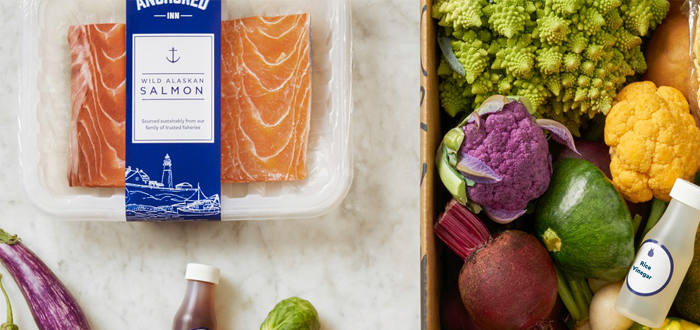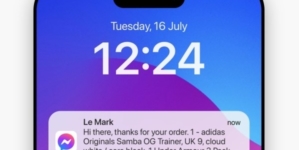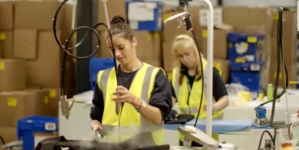-
BLACKOUT TECHNOLOGIES TARGETS TELEMATICS-INTEGRATED MOBILE DEVICE BLOCKING TO COMBAT SMARTPHONE DISTRACTION - April 1, 2025
-
OpenADR Alliance announces first OpenADR 3.0 certified products with EVoke Systems, E.ON Energy and Universal Devices - March 25, 2025
-
Growing fulfilment and contract packer appoints new Managing Director - March 25, 2025
-
When is it time to invest in a WMS? Understanding the key trigger points - March 25, 2025
-
eCapital helps Vantage Recruitment on its journey to financial success - March 24, 2025
-
Hugo Beck Celebrates 70 Years of Packaging Innovation with Open House Events - March 20, 2025
-
PROLOG FULFILMENT SUPPORTS LUNA DAILY’S COMMITMENT TO BETTER BODY CARE FOR ALL WOMEN - March 19, 2025
-
Motion Ventures launches largest-ever maritime tech fund at $100M to meet the industry’s new pace of adoption - March 18, 2025
-
ITD GLOBAL APPOINTS GROUP CHIEF REVENUE OFFICER - March 17, 2025
-
SURECAM TEAMS UP WITH ENTERPRISE FLEX-E-RENT FOR VEHICLE REPAIR & MAINTENANCE CONFERENCE - March 14, 2025
Blue Apron and the Subscription Retail Supply Chain.
The subscription retail model is not a new concept. The first basic model I can think of is a magazine subscription – a new magazine came every month unless you canceled your subscription. The first subscription service I used was Netflix, way back when the company only shipped DVD’s to your house. However, as the digital age took over, I moved over to the streaming format, and no longer have movies shipped to my house. Over the last few years, however, the subscription model has exploded.
There are literally subscription services for any product you can imagine: food, wine/beer/liquor, pet food, clothes, shaving and grooming essentials, novelty toys, books, and basically any other product. There are pros and cons for consumers when it comes to these subscription services. The biggest reason consumers subscribe is the sheer convenience of the service. There is no need to go to a store – every week or month a new box arrives. This also means that consumers do not need to make tough decisions about what products to buy, as the box is generally pre-assembled with a variety of goods. This allows consumers to potentially try a new product that they would not have considered before. On the flip side, however, is the fact that often-times, consumers do not want or need some of the items. Many services make it difficult or impossible to return items. Canceling a subscription can often be difficult as well, or at the very least, time consuming.
Some models clearly work better than others. One of the better known and most popular subscription services right now is Blue Apron. For those of you that do not know what Blue Apron is, I’ll explain. Blue Apron is an ingredient and meal-kit delivery service. The company makes weekly deliveries of pre-measured ingredients with recipes and instructions on how to put the meal together. The two-person meal option costs $59.94 per week for three meals, while the family option costs $71.92 per week for 2 meals or $143.84 per week for four meals. The key to Blue Apron is convenience. A family can go to the grocery store and buy the ingredients for significantly less; but, with Blue Apron, there is no need to go to the store or seek out a recipe. The full kit is delivered to your door.
Blue Apron was one of the hottest subscription services around, and investors had it valued at nearly $3 billion. With its IPO, the company was hoping to raise half a billion dollars. With its IPO last week, the company had to cut its price to $10 per share, which values the company at $1.9 billion, and it raised $300 million. This is mainly due to customer retention problems and the seasonality of purchases. Aside from customer retention, the company faces a number of competitors, including various start-ups and Amazon, who with its acquisition of Whole Foods, is figuring to become a big player in the subscription meal space.
Aside from the above mentioned issues, the subscription retail supply chain, especially for fresh food, can be a tricky business. First and foremost, Blue Apron prides itself on the freshness of its ingredients. This means working with family farms that support sustainable practices for its recipes. This is generally a big draw for its customers, but it also puts an added strain on procuring enough ingredients for all customers. The second part of this is to ensure that the fresh ingredients are kept fresh during the delivery process. This includes both the storage of ingredients as well as delivery. The company packs and ships all of its ingredients in refrigerated boxes with ice packs and insulated liners, keeping the ingredients fresh all day. However, this adds to the total landed cost of the boxes.
The last mile for deliveries is the most expensive part of the supply chain journey. Companies have been looking at new ways to lower costs, with many companies looking at crowd-sourced delivery models. With free shipping, and the expense of using courier services like FedEx and UPS, last mile delivery costs add up. For Blue Apron, this holds true, considering the amount of packaging involved to keep items fresh, and the individual packaging of small amounts of spices. However, margins should generally run fairly high, as the cost to buy these items at the supermarket are considerably lower than buying them from a delivery service. But, the delivery aspect is going to erode those margins, making profitability a difficult task.
The other supply chain twist for Blue Apron is the warehousing space that is needed. As subscriptions continue to grow, the company is hiring more warehouse workers. Since 2014, the company has quadrupled its workforce. This means more overhead for warehouse space as well as for more employees to measure, cut, prep, bag, and ship orders. However, reports have surfaced about unsafe working conditions, food safety violations, and employee discontent and violence in the workplace.
In conclusion, the subscription retail market is on the rise. There are hundreds of start-ups servicing every niche of the retail market. However, the meal kit market is one that is gaining more momentum than many other markets. Blue Apron is the leader in that market for the time being, and is showing that although there are many supply chain factors that can make the model difficult, including procurement, freshness, last mile delivery, warehousing, and packaging, the model can work. Many grocery chains are starting to see these services as a threat to their business and are adapting their business model to include delivery and click-and-collect options to keep up. With continued innovation, and more companies joining the subscription ranks, the market is poised to continue to put more control over the shopping experience in the hands of the customer. The big question is whether these companies have the supply chain to accommodate he change. Comment by : Chris Cunnane on Logistics Viewpoints.

































